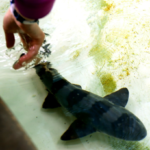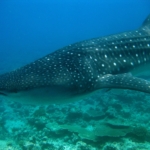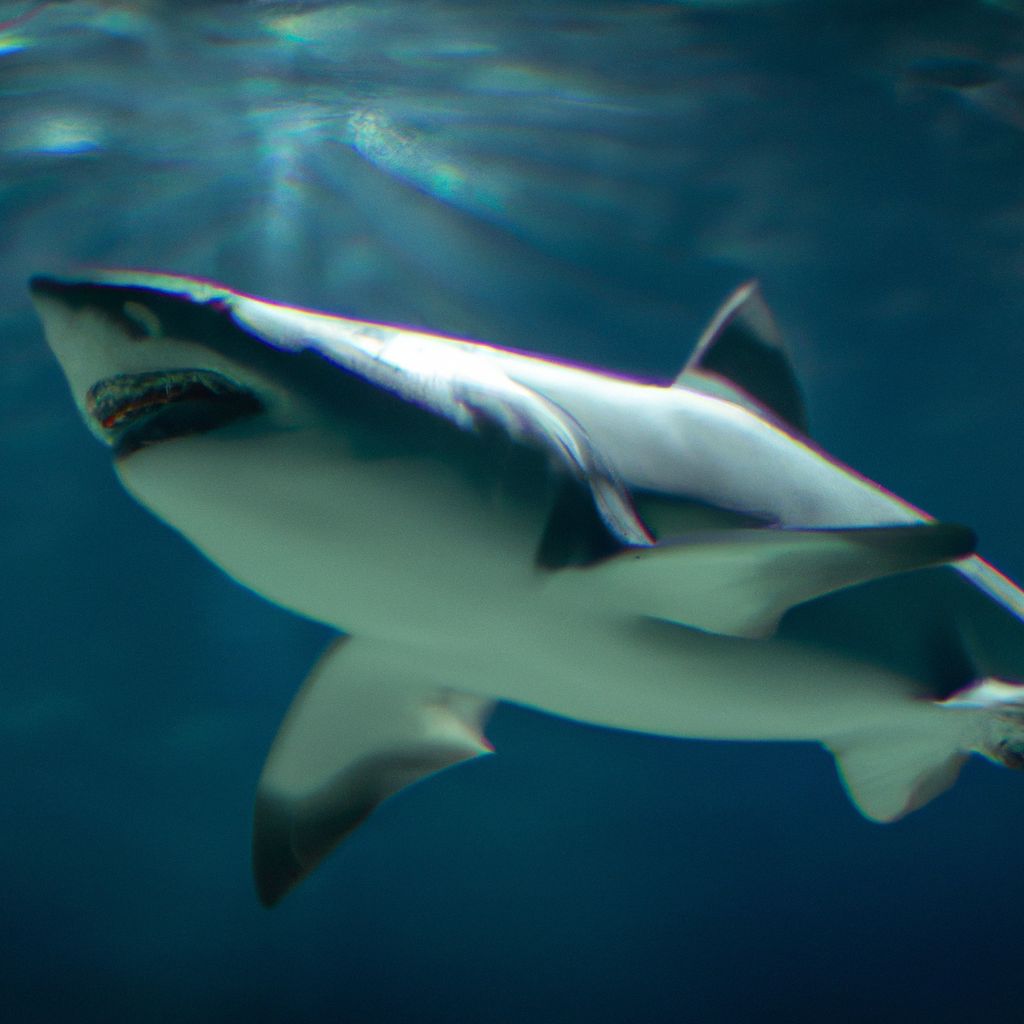
Do great white sharks ever come to a halt in the ocean? You may be surprised to know that these powerful creatures, known for their relentless swimming, have moments of repose.
Their streamlined bodies and powerful tails enable them to glide through the water, making them feared predators. Despite their reputation, they do have periods of rest. This is called “cruising” behavior; where they slow their pace but keep moving forward.
By keeping their mouths slightly open, they allow oxygen-rich water to flow over their gills and reduce energy expenditure. This allows them to remain alert and ready to pounce if food presents itself. Cruising does not equate to the complete cessation of movement for great whites.
Unlike other species of fish that can stay stationary, great whites rely on continuous motion to ensure oxygen flow to their gills. Dive deeper and witness their power, grace, and perpetual motion that leaves us in awe. Uncover more about their remarkable lives below the surface!
Key Takeaways
- Great white sharks are known for their constant swimming behavior, but recent research suggests that they may be able to stop swimming and rest at times.
- Scientists have discovered that great white sharks have a specialized network of blood vessels called the rete mirabile, which helps them maintain a constant body temperature even when they are not swimming.
- The rete mirabile acts as a heat exchanger, allowing the sharks to retain heat in their muscles and organs while conserving energy.
- This ability to rest and conserve energy is crucial for great white sharks, as they need to recover after intense periods of hunting and feeding.
- Understanding the resting behavior of great white sharks can help researchers develop better conservation strategies and protect these apex predators in their natural habitats.
The Adaptability of Great White Sharks
The adaptability of Great White Sharks is remarkable! Their unique sensory abilities and hunting techniques enable them to navigate diverse ecosystems with ease. Their acute hearing, excellent vision and fine-tuned sense of smell allow them to stealthily ambush their prey.
Furthermore, storing oils in their livers allows them optimal control underwater and the ability to transition between depths.
A surfer in California had the privilege of a close encounter with a curious Great White Shark that swam alongside him for several minutes. This story proves that even humans and Great White Sharks can coexist in harmony.
The adaptability of these creatures is truly fascinating! We could learn a lot by further exploring their mysteries. From ocean pollution to shark-operated underground disco parties, these environmental factors have more influence on shark movement than one may think!
Environmental Factors That Affect Shark Movement
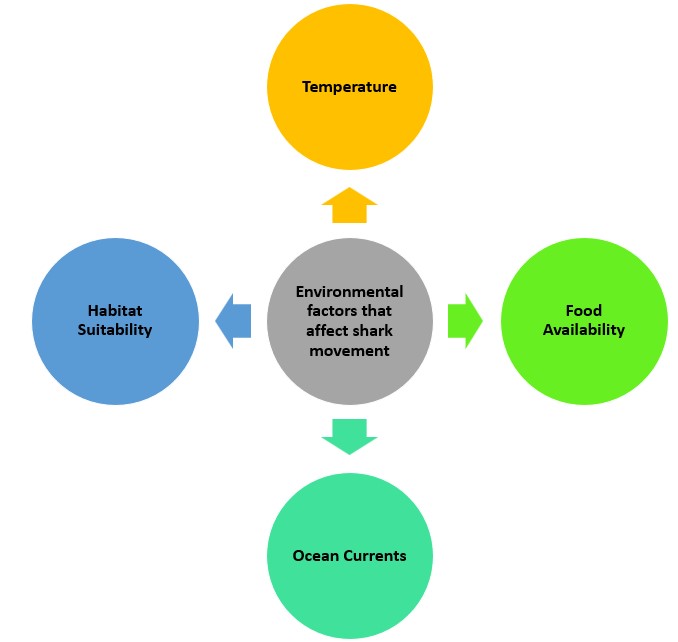
Environmental factors strongly influence the movement of great white sharks. These range from temperature to food availability and ocean currents. Let’s explore these aspects in more detail.
Temperature: Great whites are ectothermic, which means they rely on external heat for their body temperature. They prefer waters between 54-75°F (12-24°C). Warmer waters tend to suit them best.
Food Availability: As top predators, these sharks feed on seals, sea lions and other mammals. Where prey concentrations are high, they’re likely to be present.
Ocean Currents: Ocean currents guide their migrations, which may cover thousands of miles. These currents act as highways or barriers.
Habitat Suitability: Conditions such as water depth, visibility and proximity to breeding grounds all affect whether an area is suitable for great whites.
It’s important to note that each shark has different behaviour due to its circumstances and instincts. Great white sharks have been around for millions of years, displaying their amazing adaptation and survival skills.
By understanding the factors that affect shark movement, researchers and conservationists can gain insight into their behaviour, improving protection and management strategies for these iconic sea creatures.
Research and Discoveries on Great White Shark Behavior
Scientists have been studying Great White Shark behavior extensively, to uncover fascinating research and discoveries. They’ve delved into the patterns of these majestic creatures, learning about their hunting tactics, migration habits, and social interactions. Through meticulous observation and advanced technology, researchers have gained valuable insights.
One such finding is “tonic immobility,” where a shark can become temporarily paralyzed when turned upside down. Scientists are now exploring this technique as a means of immobilizing sharks for research, or during encounters with humans for safety.
It appears that Great White Sharks may have individual personalities too. Scientists study patterns in behavior, such as hunting strategies and interactions with other sharks. By understanding the unique characteristics of each shark, they hope to gain a deeper understanding of how they navigate their environment and interact with one another.
Recent studies have highlighted the remarkable swimming abilities of Great White Sharks. It appears that they possess an efficient technique called “cruising.” This involves maintaining a steady speed and constantly adjusting their pectoral fins, allowing them to swim effortlessly for extended periods while conserving energy.
Pro Tip: When you encounter a Great White Shark, it’s important to respect its space and avoid any actions that may provoke it. Remember, these magnificent creatures are an essential part of our marine ecosystem and deserve our admiration from a safe distance.
Can Great White Sharks Stop Swimming?
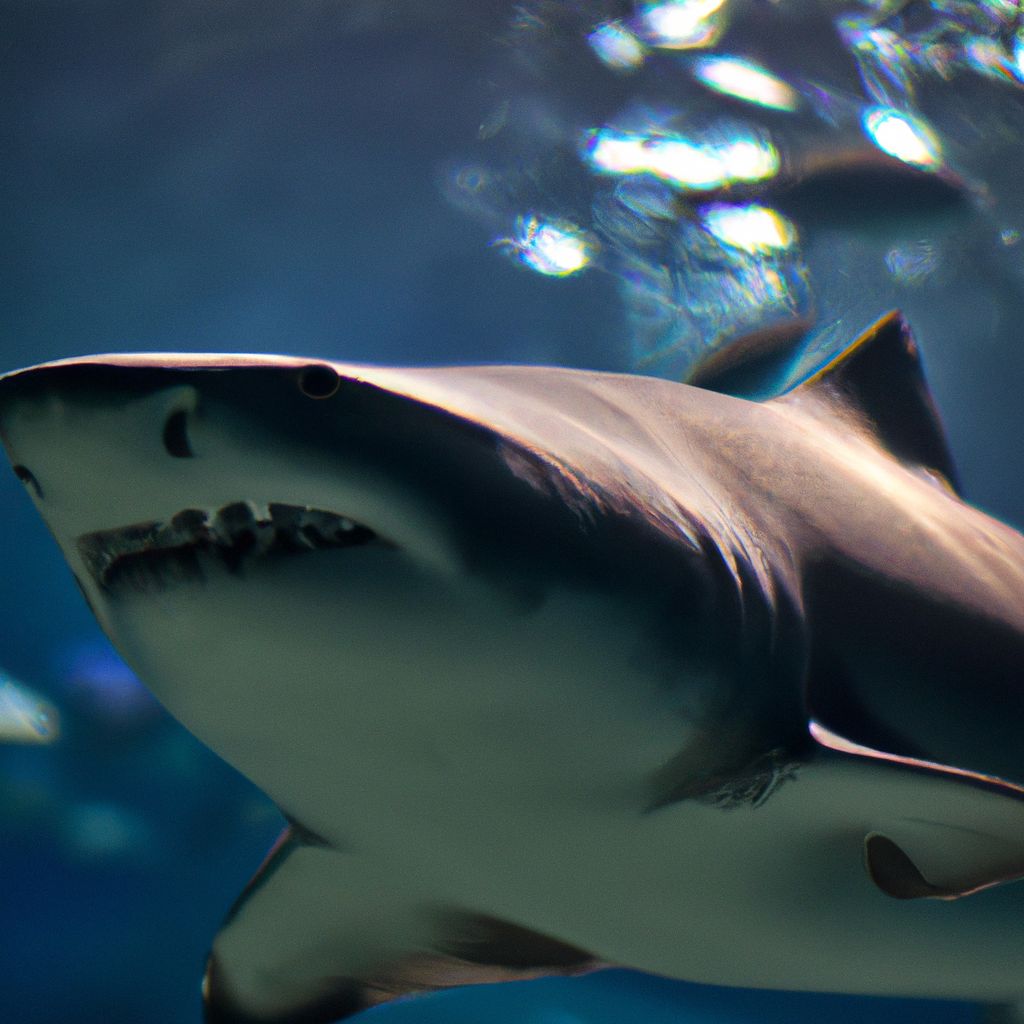
Great White Sharks are famous for their incredible swimming abilities. But can they stop moving? No! They need to keep swimming for oxygen and to regulate their body temperature. Unlike other fish, they don’t have the ability to pump water through their gills.
Sleep while swimming? Yes! This phenomenon called “tonic immobility” means they can rest without coming to a complete stop. During this state, they appear motionless but remain conscious and able to react if they sense any danger.
It’s important to understand the significance of their constant movement. By swimming, they can maintain adequate oxygen levels and regulate their body temperature. By protecting them in their natural habitat, we can help preserve the biodiversity of our oceans.
Let’s take a moment to reflect on the majestic nature of Great White Sharks. Their ceaseless motion reminds us of the beauty and resilience of life underwater. So next time you’re near the ocean, cherish the opportunity to witness these captivating beings in action – you wouldn’t want to miss out on such an extraordinary sight! The sharks may not be great at yoga, but their constant motion ensures they’ll never need a personal trainer.
The Importance of Continuous Movement for Great White Sharks
Continuous movement is essential for Great White Sharks’ survival. They need it to keep agile, hunt effectively, and get oxygen over their gills. Without it, they face many challenges that could harm their health.
These apex predators have eyes on either side of their head and a streamlined body. This helps them cover vast distances and explore new places in search of food.
Continuous movement also helps them regulate their body temperature. As ectothermic animals, they rely on external sources of heat. Swimming helps them move to warmer or colder waters as needed.
Swimming also aids digestion. They eat a lot but lack a stomach for long digestion. Swimming helps distribute nutrients and digest food.
We humans must understand the importance of continuous movement for Great White Sharks. To ensure their survival, we must protect their ocean habitats from overfishing and destruction. We must support initiatives for conservation and responsible fishing.
Let’s act now before it’s too late! Spread awareness about the importance of swimming for these creatures and join forces to preserve their natural environments. Don’t miss out on a world without Great White Sharks. Let’s make a difference and protect them for future generations!
Frequently Asked Questions
1. Can Great White Sharks stop swimming?
Yes, Great White Sharks are capable of stopping swimming. However, they need to keep swimming in order to breathe. If they stop moving, they will suffocate and die.
2. How long can Great White Sharks stay still without swimming?
Great White Sharks can stay still for a brief period of time, usually ranging from a few minutes to a couple of hours. After that, they must resume swimming to ensure proper oxygen flow through their gills.
3. Do Great White Sharks sleep?
While it is not yet fully understood, it is believed that Great White Sharks exhibit unihemispheric sleep. This means that only one hemisphere of their brain sleeps at a time while the other remains active, allowing them to continue swimming and maintain their basic functions during rest periods.
4. Why do Great White Sharks need to keep swimming to breathe?
Great White Sharks have a respiratory system that relies on water passing through their gills to extract oxygen. By constantly swimming, they ensure a steady flow of water over their gills, allowing them to extract oxygen and dispose of carbon dioxide effectively.
5. Can Great White Sharks rest while swimming?
Yes, Great White Sharks can conserve energy by swimming at slower speeds, allowing them to rest while still maintaining essential functions. They may even adopt a method known as “cruising” where they glide through the water in a semi-relaxed state.
6. What happens if a Great White Shark stops swimming?
If a Great White Shark stops swimming, it will be unable to pass water over its gills to extract oxygen. This can lead to asphyxiation and ultimately result in the shark’s death.
Conclusion
Great white sharks are renowned for their strong swimming abilities. Yet, they can also stop swimming – which is not common. This usually takes place when they’re resting or feeding. They remain motionless or move at a very slow rate to save energy. It’s amazing to see these creatures transform from active predators to calm animals.
Stopping swimming can also be for thermoregulation. These sharks can warm their bodies by basking in the sun near the surface of the water. By standing still or moving slowly, they can increase their exposure to sunlight and regulate their body temperature better.
Another interesting detail is their ability to spy hop. This involves lifting their head above the water to observe their surroundings. Sharks aren’t the only animals to do this – dolphins and whales do it too!

